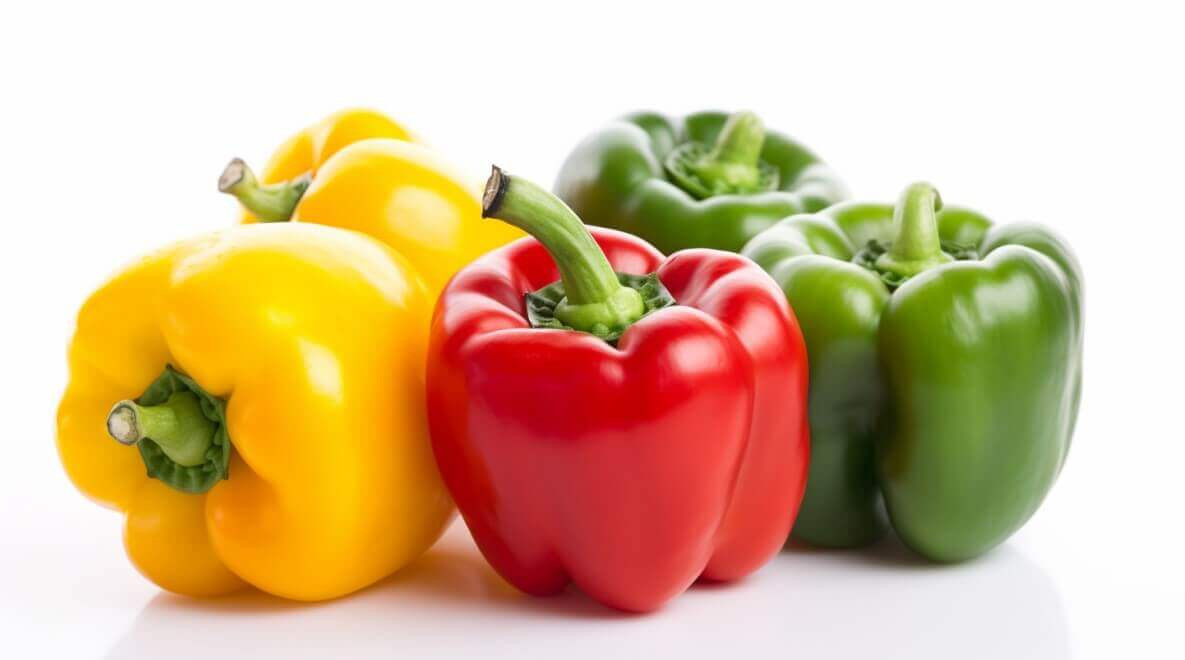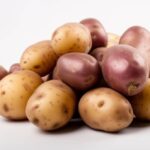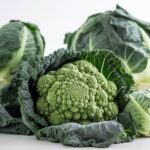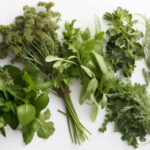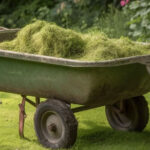Would you prefer to listen to a short podcast discussion about this article? Click on the audio below.
Growing bell peppers can be a fulfilling and rewarding experience for gardeners of all skill levels. Bell peppers are a versatile vegetable that can be used in a variety of dishes, from salads to stir-fries to stuffed peppers. However, successfully growing bell peppers requires careful planning, preparation, and care. In this article, we will guide you through the process of growing peppers, from choosing the right variety and preparing the soil to harvesting and using your peppers. By following our tips and techniques, you can enjoy a bountiful harvest of delicious, homegrown peppers.
1. Choosing the Right Bell Pepper Variety
When it comes to growing peppers, choosing the right variety is key to a successful harvest. Here are a few things to consider when selecting your bell pepper variety:
Determining the Best Variety for Your Location
Bell peppers are naturally warm-weather plants, which means they thrive in climates with long, hot summers. If you live in a cooler area, you may want to choose a variety that matures faster or is more tolerant of cooler temperatures.
Considering the Bell Pepper's Colour and Flavour
Bell peppers come in a range of colours, from green and yellow to red and purple. Each colour has a slightly different flavour and nutritional profile. Decide which colour you prefer and select a variety that produces the desired colour.
Choosing Disease-Resistant Varieties
Bell peppers are susceptible to a variety of diseases, including bacterial spot, anthracnose, and phytophthora blight. To minimize the risk of disease, choose a variety that is resistant to common bell pepper diseases.
2. Preparing the Soil
Once you've selected your bell pepper variety, it's time to prepare the soil for planting. Here's what you need to know:
Testing Soil Quality and pH Level
Bell peppers prefer well-draining soil with a pH between 6.0 and 6.8. Test your soil's pH level using a soil pH test kit, which can be found at most garden centres.
Amending Soil with Organic Matter and Nutrients
To improve soil quality, add organic matter such as compost or aged manure to the soil before planting. You can also add a balanced fertilizer to ensure your bell peppers receive adequate nutrients.
Improving Soil Drainage
Bell peppers need well-draining soil to prevent the roots from becoming waterlogged and to reduce the risk of disease. If your soil is heavy and does not drain well, add sand or perlite to improve drainage.
3. Planting Pepper Seeds or Transplants
Once the soil is prepared, it's time to plant your bell peppers. Here are a few options:
Starting Your Seeds Indoors
If you're starting your peppers from seed, plant them indoors 8-10 weeks before the last frost date in your area. Keep the soil moist and warm (around 70°F) to encourage germination.
Transplanting Seedlings into the Garden
Once your seedlings have grown to about 4 inches tall, transplant them into the garden. Space the plants about 18-24 inches apart, with rows about 24-36 inches apart.
Planting Seeds Directly into the Garden
Bell peppers can also be planted directly into the garden once the soil has warmed up and there is no longer a risk of frost. Plant the seeds about 1/4 inch deep and space them 18-24 inches apart.
4. Providing Proper Care for Your Pepper Plants
To ensure your bell peppers grow healthy and strong, be sure to provide them with the proper care they need.
Providing Adequate Water and Sunlight
Bell peppers need at least six hours of direct sunlight per day. Make sure to water them regularly, especially during hot, dry spells. Avoid getting the leaves wet when you water to minimize the risk of disease.
Pruning Plants for Optimal Growth
Prune your bell pepper plants by removing any suckers that grow between the main stem and the branches. This will encourage the plant to focus its energy on growing larger fruit.
Fertilizing Your Plants for Maximum Yield
Fertilize your bell pepper plants every 4-6 weeks with a balanced fertilizer. Be careful not to over-fertilize, as this can lead to excessive foliage growth at the expense of fruit production. Stick to the recommended application rates on the fertilizer package.
5. Protecting Your Plants from Pests and Diseases
Growing bell peppers can be a rewarding experience, but it’s important to be mindful of the pests and diseases that can affect them. Here are some common pests and diseases that can affect bell peppers and how to deal with them.
Identifying Common Pests and Diseases
Some of the most common pests that can affect bell peppers include aphids, spider mites, and whiteflies. These pests can cause damage to the leaves and fruit of the bell pepper plant. Diseases like anthracnose and bacterial wilt can also have a negative impact on the health and productivity of the plant.
Using Natural Methods to Control Pests and Diseases
There are many natural methods that you can use to control and prevent pests and diseases. For example, introducing ladybugs or lacewings to your garden can help control aphids naturally. You can also use neem oil or insecticidal soap to prevent pests from attacking your plants. To prevent diseases, make sure you're watering your plants correctly and providing adequate airflow around the base of the plant.
Applying Chemical Treatments to Manage Pests and Diseases
If natural methods aren't enough to keep pests and diseases at bay, you may need to resort to chemical treatments. Be sure to carefully follow instructions and use chemical treatments sparingly to avoid harming beneficial insects or your bell pepper plants. Always exercise caution when using chemical treatments and wear protective gear such as gloves and a mask.
6. Harvesting Your Peppers at the Right Time
When it comes to harvesting bell peppers, timing can be everything. Here are some tips for harvesting your bell peppers at the right time.
Identifying When Your Peppers Are Ripe and Ready for Harvest
Bell peppers are typically ready for harvest when they've reached their full size and have changed colour. If you're growing green bell peppers, wait for them to turn red, yellow, or orange. If you're growing other varieties, look for a deepening of colour and a firm, shiny texture.
Harvesting Your Peppers to Promote Continued Growth
When harvesting your bell peppers, be sure to use a sharp knife or scissors to avoid damaging the plant. It's best to leave a small amount of stem attached to the fruit to promote continued growth. You can also pinch off any small or damaged fruit to redirect the plant's energy towards the larger, healthier fruit.

7. Storing and Using The Peppers Once Harvested
Once you've harvested your bell peppers, there are many different ways to store and use them. Here are some ideas to get you started.
Keeping Bell Peppers Fresh in the Refrigerator or Freezer
If you're not going to use your bell peppers right away, you can store them in the refrigerator or freezer. To store them in the refrigerator, wrap them in a paper towel and place them in an airtight container or plastic bag. To freeze them, blanch them first, then place them in an airtight container or freezer bag.
Cooking and Incorporating Bell Peppers into Various Dishes
Bell peppers can be used in a variety of dishes, from salads to stir-fries to stuffed peppers. They can be sautéed, roasted, or eaten raw. They're a great source of vitamin C and are low in calories, making them a healthy addition to any meal.
Pickling or Canning Bell Peppers for Long-Term Storage
If you have a lot of peppers or want to store them for a longer period of time, you can pickle or can them. Pickled bell peppers can be stored in the refrigerator for up to a month, while canned bell peppers can be stored for up to a year. There are many different recipes available for both pickling and canning bell peppers, so find one that works for you and give it a try!
Growing peppers in the UK may require some hard work, but the end result is well worth it. By choosing the right variety, preparing the soil, providing proper care, and protecting your plants from pests and diseases, you can enjoy a delicious and healthy harvest of pepper. Whether you eat them fresh, cook them into meals, or preserve them for later use, your homegrown peppers will add a burst of flavour and colour to your kitchen. With these tips and techniques, you can successfully grow bell peppers in the UK and enjoy the satisfaction of producing your own fresh produce.
FAQ
1. Can I grow the pepper plants in containers?
Yes, you can grow bell peppers in containers as long as the container is at least 12 inches deep and wide, has adequate drainage, and is filled with nutrient-rich soil. Be sure to place the container in a sunny location, and water the peppers regularly.
2. When should I harvest my peppers?
Bell peppers are usually ready for harvest when they have reached full size and have turned their mature colour (green, red, yellow, or orange). However, you can also harvest peppers when they are still green if you prefer a milder flavour. Be sure to check your bell peppers regularly and harvest them before they become overripe and lose their firmness.
3. How should I store my bell peppers?
You can store fresh bell peppers in the refrigerator for up to two weeks. To keep them fresh, place them in a plastic bag or container and store them in the crisper drawer. You can also freeze bell peppers for later use by chopping them into small pieces and placing them in an airtight container or freezer bag. Canned or pickled bell peppers can be stored in a cool, dry place for up to a year.
4. How can I protect my pepper plants from pests and diseases?
To protect your bell peppers from pests and diseases, be sure to keep the surrounding area clean and free of plant debris and weeds. You can also plant disease-resistant varieties of bell peppers and use natural pest control methods such as companion planting, crop rotation, and insect-repelling plants. If necessary, you can also use chemical treatments to manage pests and diseases, but be sure to follow the instructions carefully and use them sparingly.
If you are keen on organic gardening, check out The Soil Association website
If you need any further information or assistance with this article, don't hesitate to Contact Us
